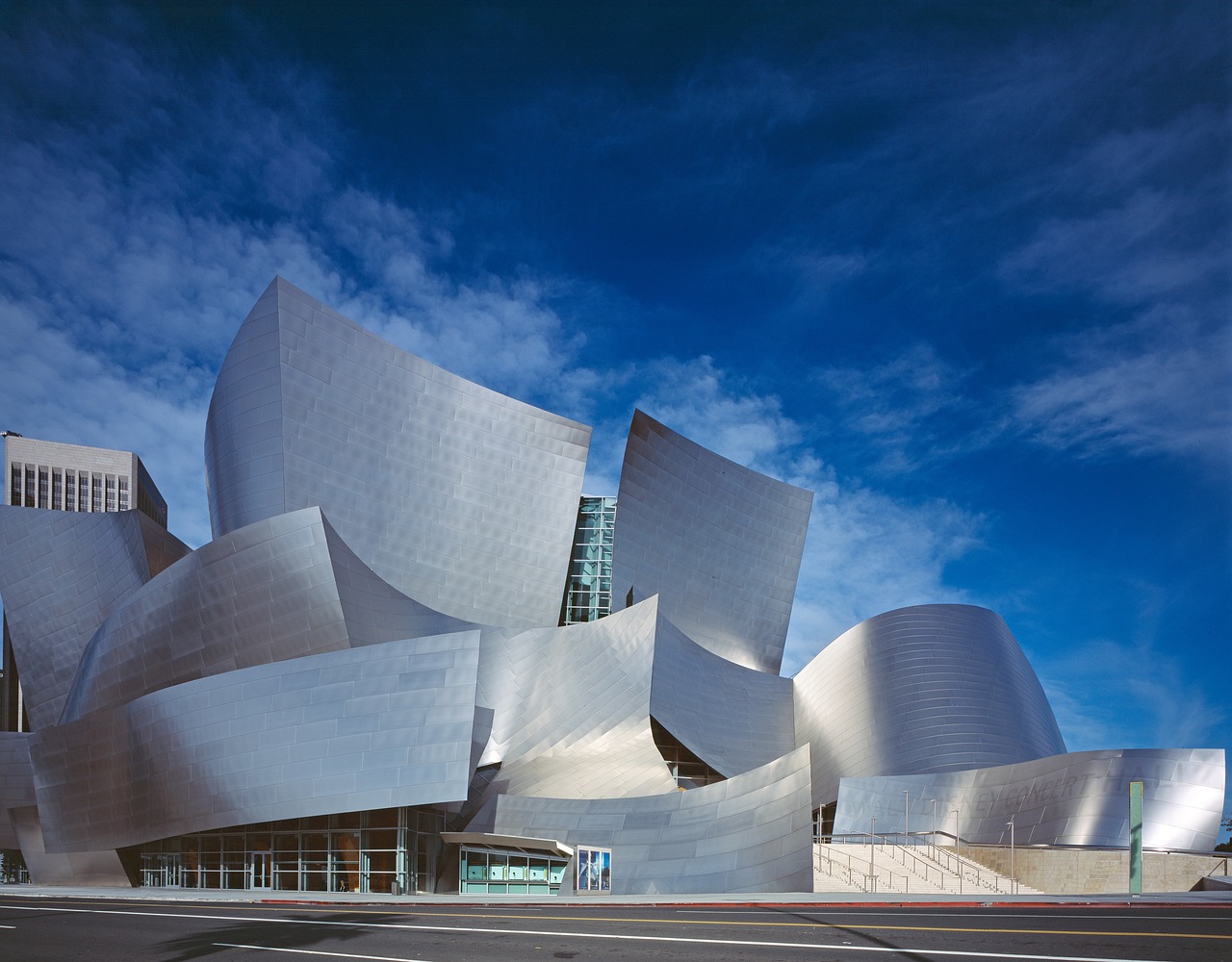Table of Contents
- The 1990s were a golden age for children’s television and at the forefront of this era were two giants of kids’ programming
- Nickelodeon: The Pioneers of Quirky and Original Content
- Nicktoons Revolution
- Live-Action Hits
- Game Shows and Nick Studios
- Disney: The Magic Kingdom of Storytelling and Animation
- Disney’s Animated Series
- “The Disney Afternoon”
- “Boy Meets World”
- The Cultural Impact and Legacy
- Iconic Characters
- Soundtracks and Merchandise
- Nostalgia and Reboots
The 1990s were a golden age for children’s television and at the forefront of this era were two giants of kids’ programming
Nickelodeon and Disney. These networks provided a treasure trove of iconic shows that continue to evoke nostalgia and fond memories in those who grew up during that time. In this article, we’ll delve into the epic battle of 90’s kids’ programming between Nickelodeon and Disney, exploring their unique offerings, cultural impact and the enduring legacy they left behind.
The ’90s were a truly magical time for kids’ television and at the heart of this era’s enchantment were Nickelodeon and Disney. These two networks weren’t just channels; they were gateways to fantastical worlds, brimming with beloved characters, imaginative stories and life lessons that left an indelible mark on an entire generation.
Diverse Offerings and Unique Identity:
Nickelodeon: Nickelodeon was the embodiment of quirky and irreverent fun. Shows like “Rugrats,” “Doug,” and “Ren & Stimpy” were as zany as they were endearing. The network was known for its green slime, the iconic orange splat logo and a commitment to pushing the boundaries of children’s entertainment with shows like “Are You Afraid of the Dark?” Nickelodeon was the go-to destination for kids who embraced the weird and the wonderful.
Disney: Disney, on the other hand, was synonymous with timeless storytelling and magical escapades. “DuckTales,” “Chip ‘n’ Dale: Rescue Rangers,” and “Darkwing Duck” brought classic Disney characters into animated adventures, while “The Little Mermaid” and “Aladdin” continued Disney’s legacy of enchanting fairy tales. Disney’s identity was steeped in magic, music and heartwarming life lessons.
Cultural Impact:
Nickelodeon: Nickelodeon didn’t just entertain; it shaped a sense of humor and style. The network’s game shows like “Double Dare” and “Legends of the Hidden Temple” encouraged participation and fun interaction. And who could forget the unforgettable slime moments on “Nickelodeon’s Kids’ Choice Awards”? The network’s impact extended to its cartoons, which introduced offbeat humor and witty dialogue that still resonate with fans today.
Disney: Disney, with its rich animation and enchanting storytelling, instilled values of bravery, kindness and friendship. Iconic shows like “DuckTales” emphasized adventure and the importance of family bonds, while “Darkwing Duck” championed justice and heroism. Disney’s profound influence went beyond the screen, as its characters and stories became beloved figures in popular culture.
Enduring Legacy:
- Both Nickelodeon and Disney left an enduring legacy that transcends nostalgia. Their shows continue to be celebrated by new generations of viewers, proving that great storytelling is timeless.
- The ’90s kids who grew up with these networks have carried the lessons and memories with them into adulthood. They now share the magic of their favorite shows with their own children, creating a beautiful cycle of nostalgia and shared joy.
In this article, we’ll journey back to that vibrant era of ’90s kids’ programming and explore the unique contributions, cultural impact and enduring legacy of Nickelodeon and Disney. These networks weren’t just channels on the TV; they were the portals to unforgettable adventures, cherished friendships and life lessons that have stood the test of time. So, sit back and prepare for a delightful trip down memory lane as we dive into the epic battle of ’90s kids’ programming.
Additionally, you can find further information on this topic by visiting this page: GC115-Understanding-Media-and-Culture-An-Introduction-to-Mass …
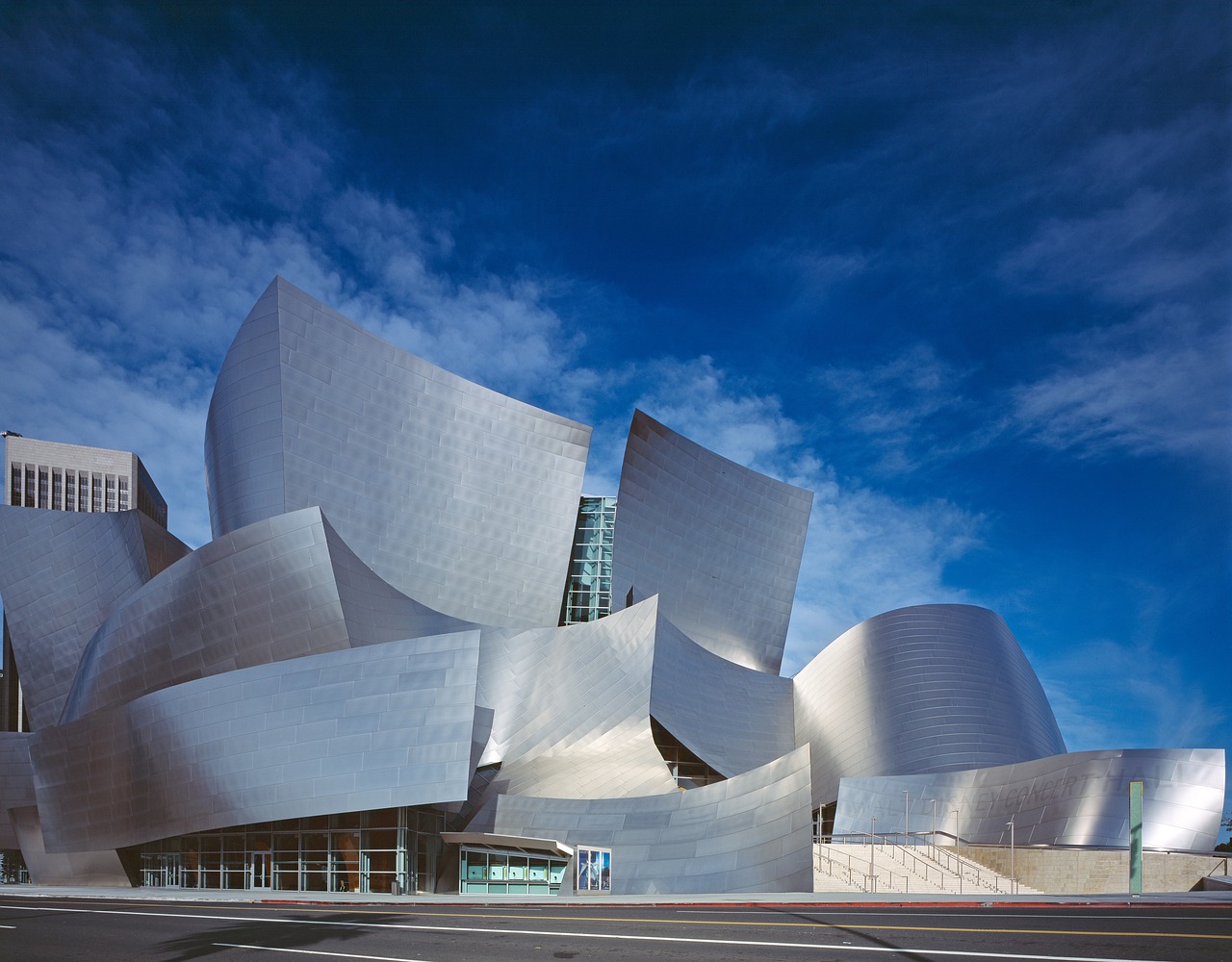
Nickelodeon: The Pioneers of Quirky and Original Content
Nickelodeon, often lovingly referred to as “Nick,” was known for its commitment to quirky and original content that celebrated the creativity and individuality of its young viewers.
Nickelodeon, often lovingly referred to as “Nick,” was known for its commitment to quirky and original content that celebrated the creativity and individuality of its young viewers. This approach set the network apart as a pioneering force in children’s television, fostering an environment where kids felt seen, heard and empowered.
At the heart of Nickelodeon’s success was its recognition that young viewers are not a monolithic group. Instead, the network embraced diversity in all its forms, offering a range of programming that reflected the varied interests, backgrounds and experiences of its audience. Whether it was animated shows like “Rugrats” or live-action series like “Clarissa Explains It All,” Nickelodeon aimed to provide something for everyone.
One of the network’s most memorable achievements was its dedication to showcasing young talent. Through shows like “All That” and “The Amanda Show,” Nickelodeon gave rising stars like Amanda Bynes, Kenan Thompson and Kel Mitchell a platform to shine. This not only provided entertainment but also inspired young viewers by demonstrating that their dreams and aspirations were attainable.
Nickelodeon’s commitment to quirkiness was evident in its unconventional and offbeat programming choices. Shows like “SpongeBob SquarePants” and “The Ren & Stimpy Show” embraced humor that was decidedly odd and sometimes absurd, resonating with young viewers who appreciated the freedom to be different and embrace their own quirks.
In addition to its television content, Nickelodeon extended its influence through initiatives like the “Big Help,” encouraging young people to get involved in community service and make a positive impact on the world. This commitment to social responsibility instilled values of empathy and compassion in its viewers, reinforcing the idea that young people could be catalysts for positive change.
Moreover, Nickelodeon’s creative approach to branding and marketing created a sense of wonder and excitement. The iconic orange blimp, the “Nicktoons” lineup and events like the “Kids’ Choice Awards” all contributed to a sense of belonging and shared experience among its young viewers. Nickelodeon became more than just a television network; it was a cultural phenomenon that brought kids together.
In conclusion, Nickelodeon’s dedication to quirky and original content left an indelible mark on the world of children’s television. It celebrated the uniqueness and potential of its young viewers, encouraging them to embrace their individuality and creativity. Beyond entertainment, Nickelodeon was a platform for empowerment and inspiration, fostering a generation of kids who learned that being themselves was not only okay but something to be celebrated.
If you’d like to dive deeper into this subject, there’s more to discover on this page: The Best Old Nickelodeon Shows & Cartoons

Nicktoons Revolution
Nickelodeon revolutionized children’s programming with the launch of “Nicktoons,” a lineup of original animated series that included classics like “Rugrats,” “Doug,” and “Ren & Stimpy.” These shows broke away from traditional animation norms, offering unique art styles and offbeat humor.
Nickelodeon’s introduction of “Nicktoons” marked a turning point in children’s television, forever altering the landscape of animated entertainment. This groundbreaking initiative not only introduced a new generation to imaginative storytelling but also redefined the very essence of what animated shows for children could be. Let’s delve into how “Nicktoons” paved the way for a revolution in children’s programming:
1. Creative Freedom and Innovation: “Nicktoons” were a breath of fresh air in the world of animation. They allowed creators to unleash their imagination and experiment with unconventional art styles and narratives. This creative freedom birthed series like “Ren & Stimpy,” which pushed the boundaries of what was deemed suitable for a young audience. These shows embraced a “cartoon for everyone” ethos, resulting in content that appealed to both kids and adults.
2. Relatable and Multifaceted Characters: The characters in “Nicktoons” were far from one-dimensional. Take “Rugrats,” for example, which followed the adventures of babies who had their own unique personalities and perspectives on the world. These characters weren’t just caricatures; they were relatable, multifaceted and offered valuable life lessons beneath the humor.
3. Varied Art Styles: “Nicktoons” introduced a kaleidoscope of art styles, each distinct and memorable in its own right. “Doug” was known for its simple yet endearing character designs, while “Aaahh!!! Real Monsters” embraced a darker, more surreal aesthetic. These varied art styles showcased the diversity of animation as an art form.
4. Quirky Humor and Wit: The humor in “Nicktoons” was anything but cookie-cutter. It was quirky, irreverent and often unapologetically bizarre. “Ren & Stimpy” embraced slapstick comedy and absurdity, while “Rocko’s Modern Life” was a satire of the everyday struggles of adulthood. This unique brand of humor not only entertained but also encouraged young viewers to think outside the box.
5. Social and Cultural Commentary: Amid the laughter, “Nicktoons” didn’t shy away from addressing real-world issues and social commentary. “Hey Arnold!” tackled themes of diversity, urban life and empathy, offering valuable life lessons along the way. These shows demonstrated that children’s programming could be a platform for meaningful discussions.
6. Lasting Impact: The impact of “Nicktoons” is undeniable. Many of these series, like “SpongeBob SquarePants,” have continued to thrive for decades, becoming beloved icons in their own right. They’ve left an indelible mark on popular culture, inspiring fan communities, merchandise and even theme park attractions.
7. A Generation’s Childhood: For an entire generation, “Nicktoons” defined their childhoods. These shows were more than just entertainment; they were formative experiences that shaped values, fostered creativity and created lasting memories.
8. Influence on the Industry: The success of “Nicktoons” influenced the animation industry as a whole. It encouraged other networks to invest in original animated programming for children, leading to a renaissance of animated storytelling across various platforms.
In conclusion, “Nicktoons” not only revolutionized children’s programming but also set a high bar for innovation, creativity and storytelling in the world of animation. They challenged norms, celebrated individuality and proved that cartoons could be both entertaining and thought-provoking. These shows continue to hold a special place in the hearts of viewers who grew up with them and their legacy lives on in the world of animation, where the pursuit of imagination and originality remains as vibrant as ever.
For additional details, consider exploring the related content available here 50 Essential Nickelodeon Shows That All The ’80s And ’90s Kids …

Live-Action Hits
Nickelodeon also had a successful roster of live-action series like “Clarissa Explains It All,” “The Adventures of Pete & Pete,” and “All That.” These shows featured relatable characters and humor that resonated with kids and tweens.
Nickelodeon’s success in the realm of live-action programming extended beyond its animated hits, as it offered a treasure trove of relatable characters and humorous stories that left a lasting impact on kids and tweens during the 1990s.
“Clarissa Explains It All” was a beloved coming-of-age series that followed the adventures of Clarissa Darling, a smart and resourceful teenager navigating the ups and downs of adolescence. Clarissa’s direct-to-camera explanations of her life and experiences made her an endearing and relatable figure for viewers. The show captured the essence of growing up, addressing themes such as friendships, family dynamics, school and the challenges of teenage life.
“The Adventures of Pete & Pete” was an eccentric and offbeat gem that captivated audiences with its quirky characters and whimsical storytelling. The show centered around two brothers, both named Pete and their quirky adventures in the fictional town of Wellsville. With surreal elements and a dose of absurdity, the series invited viewers into a world where the ordinary became extraordinary. It celebrated the quirks and idiosyncrasies of childhood, reminding us that the seemingly mundane could be a source of wonder and joy.
“All That” was Nickelodeon’s answer to sketch comedy for kids and tweens. It showcased a diverse cast of young comedians who delivered hilarious and often irreverent sketches, parodies and characters. The show’s format allowed it to tackle a wide range of topics, from pop culture satires to social commentary, all while keeping the humor relatable and age-appropriate. “All That” not only entertained but also empowered young viewers to appreciate the art of comedy and creative expression.
What set these live-action series apart was their ability to authentically connect with their target audience. They featured relatable characters who faced everyday challenges, dilemmas and triumphs that mirrored the experiences of the viewers themselves. The humor, while often zany and outlandish, remained grounded in the world of kids and tweens, making it accessible and relatable.
These shows didn’t just entertain; they provided a sense of belonging and validation for their young viewers. They showed that it was okay to be unique, that growing up came with its share of awkward moments and that humor could be a powerful tool for navigating the complexities of life. Nickelodeon’s live-action series of the 1990s served as a comforting and entertaining companion on the journey of adolescence, leaving an enduring legacy of nostalgia and laughter for a generation that continues to cherish these timeless classics.
For additional details, consider exploring the related content available here Battle of the childhood stations: Is Disney, Nickelodeon or Cartoon …
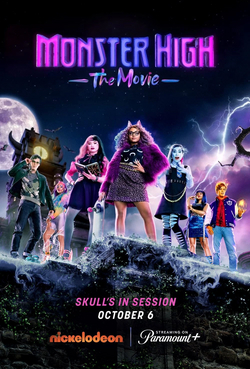
Game Shows and Nick Studios
“Double Dare,” “Legends of the Hidden Temple,” and “GUTS” brought the excitement of game shows to a younger audience, while Nick Studios in Orlando allowed kids to witness the magic of television production up close.
“Double Dare,” “Legends of the Hidden Temple,” and “GUTS” weren’t just game shows; they were an integral part of many childhoods, infusing excitement, adventure and friendly competition into the lives of young viewers. These shows, with their unique formats and engaging challenges, provided a refreshing twist on traditional game shows, capturing the imaginations of a younger audience.
“Double Dare” transformed the mundane into the extraordinary, turning everyday activities into hilarious and messy contests. It was a game show where the improbable became possible and contestants eagerly accepted outrageous physical challenges, from giant banana splits to slime-filled obstacle courses. The show’s zany humor and physicality resonated with kids, making it a beloved favorite.
“Legends of the Hidden Temple” whisked viewers away on an epic adventure, where historical knowledge and physical prowess were the keys to success. The show’s captivating blend of education and excitement taught young viewers about history and culture while keeping them on the edge of their seats as contestants navigated the enigmatic temple. It was a captivating journey through time that ignited curiosity and a thirst for knowledge.
“GUTS” elevated competition to new heights, challenging kids to push their limits and strive for athletic greatness. It celebrated sportsmanship, determination and teamwork, instilling valuable life lessons in young minds. The show’s thrilling athletic contests and iconic Aggro Crag finale became emblematic of the determination and resilience needed to overcome obstacles.
Nick Studios in Orlando was the place where the magic of television came to life for countless kids. It was a gateway to the world behind the screen, offering young fans the opportunity to witness the production process up close. Visiting the studio was like stepping into a dream, where the sets, props and familiar faces from their favorite shows became tangible and real. It fostered a sense of connection and excitement that extended beyond the TV screen.
Collectively, these shows and the Nick Studios experience were more than just entertainment; they were a formative part of childhoods. They encouraged kids to dream big, to embrace adventure and to believe in the magic of television. They reminded us that the world of imagination and possibility knows no bounds and that even the most ordinary activities can become extraordinary adventures.
Today, the legacy of these shows lives on not only in the hearts of those who grew up with them but also in the spirit of nostalgia that they continue to evoke. They remain a testament to the enduring power of children’s programming to inspire, educate and captivate young minds, leaving an indelible mark on the generations that experienced their magic.
Should you desire more in-depth information, it’s available for your perusal on this page: 90s Nickelodeon game shows: The 5 best | EW.com
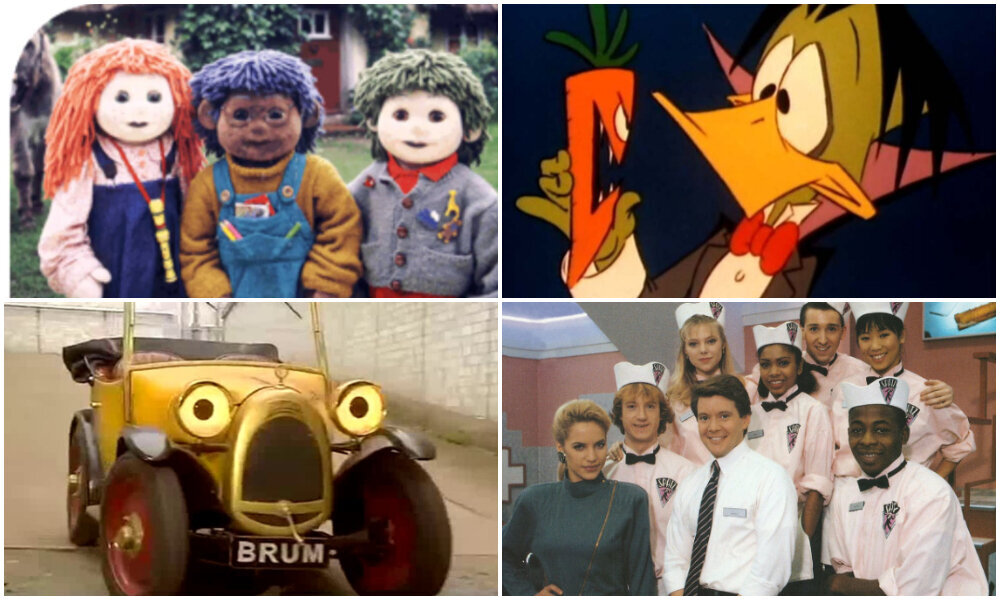
Disney: The Magic Kingdom of Storytelling and Animation
Disney, a household name in entertainment, was no stranger to children’s programming, bringing the magic of its beloved characters and storytelling to the small screen.
Disney, a name synonymous with enchantment and wonder in the realm of entertainment, had a long and cherished history of enchanting audiences of all ages, including the youngest viewers, with its captivating children’s programming. The magic of Disney didn’t just live within the confines of the silver screen; it extended its reach to the small screen, opening up a world of imagination and adventure right in the comfort of our homes.
Disney understood the power of storytelling like no other. Its beloved characters, from the iconic Mickey Mouse to the fearless Moana, found a new home on television, allowing children to embark on countless journeys of discovery. Whether it was the heartwarming lessons of friendship in the Hundred Acre Wood with Winnie the Pooh or the swashbuckling escapades with Jake and the Never Land Pirates, Disney’s commitment to storytelling shone brightly in its children’s programming.
The small screen became a portal to fantastical worlds where kids could dream, laugh and learn. Disney’s dedication to quality animation, memorable songs and rich narratives ensured that each program was not just a show but an enchanting experience. These shows weren’t mere entertainment; they were windows into a universe brimming with life lessons, creativity and boundless possibilities.
Moreover, Disney’s children’s programming brought families together. Parents and children could bond over the timeless tales and timeless values imparted by characters like Simba, Ariel and Belle. These shows encouraged discussions about friendship, courage and the importance of staying true to oneself, leaving a lasting impact on young minds.
Disney’s commitment to educational programming also shone through in series like “The Little Einsteins” and “Mickey Mouse Clubhouse,” which blended entertainment with valuable lessons in problem-solving, teamwork and critical thinking. These shows were more than just a way to keep kids engaged; they were tools for nurturing young minds.
In essence, Disney’s foray into children’s programming wasn’t merely a business endeavor; it was a continuation of its legacy of storytelling and enchantment. It brought the magic of Disney directly into living rooms worldwide, igniting the imaginations of generations and reminding us all that, no matter our age, the joy of storytelling and the wonder of Disney are timeless treasures to be cherished.
Additionally, you can find further information on this topic by visiting this page: 38 TV Shows All ’90s Kids Have Definitely Forgotten About
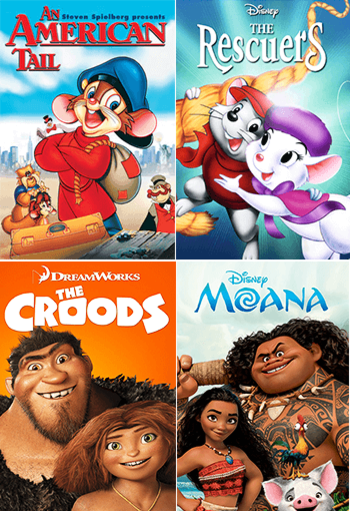
Disney’s Animated Series
Disney introduced a wide range of animated series based on their iconic films, including “Aladdin,” “The Little Mermaid,” and “Hercules.” These shows allowed fans to revisit their favorite characters in new adventures.
Disney’s foray into animated series based on their beloved films was nothing short of enchanting. With shows like “Aladdin,” “The Little Mermaid,” and “Hercules,” they extended the magic of their classic movies, offering fans a chance to embark on new adventures with their cherished characters.
“Aladdin” took us back to the bustling streets of Agrabah, where we joined Aladdin, Jasmine and their friends on thrilling escapades that expanded the enchanting world of the original film. From battling nefarious sorcerers to unraveling mysterious artifacts, the series allowed us to dive deeper into the Arabian Nights-inspired universe while retaining the humor and heart that made the movie a classic.
“The Little Mermaid” series transported us beneath the waves to the colorful realm of Atlantica. Here, Ariel, Flounder and Sebastian embarked on underwater quests, discovering hidden treasures, encountering mythical creatures and facing new challenges. This animated extension of Ariel’s underwater kingdom let us dive into the ocean’s depths and explore uncharted territories, all while celebrating the importance of friendship and self-discovery.
“Hercules” continued the heroic adventures of the mighty demigod as he defended ancient Greece against various mythical monsters and formidable foes. With the help of his trusty sidekicks, including Phil and Pegasus, Hercules faced trials and tribulations that not only showcased his physical strength but also his inner growth and moral character. The series expanded upon the comedic and action-packed elements of the original movie, offering a fresh perspective on Greek mythology.
These animated series were not mere spin-offs; they were extensions of the Disney magic. They allowed fans to revisit their favorite characters and settings, immersing themselves in new stories filled with humor, action and heartwarming moments. The shows also introduced new characters and villains, adding depth to the Disney universes and keeping the narratives fresh and engaging.
Moreover, these series reinforced Disney’s commitment to storytelling excellence. They maintained the high standards of animation, music and voice acting that had become synonymous with the Disney brand. This ensured that both longtime fans and new generations of viewers could enjoy the same quality and enchantment that Disney was known for.
In essence, Disney’s animated series based on iconic films were a gift to fans, offering a delightful continuation of beloved stories and characters. They provided a bridge between the magic of the big screen and the comfort of episodic adventures, reminding us that the enchantment of Disney’s worlds knows no bounds and can continue to captivate our imaginations, no matter where our adventures may take us.
To delve further into this matter, we encourage you to check out the additional resources provided here: Disney Channel VS Nickelodeon: Battle of the Channels! | Articles …
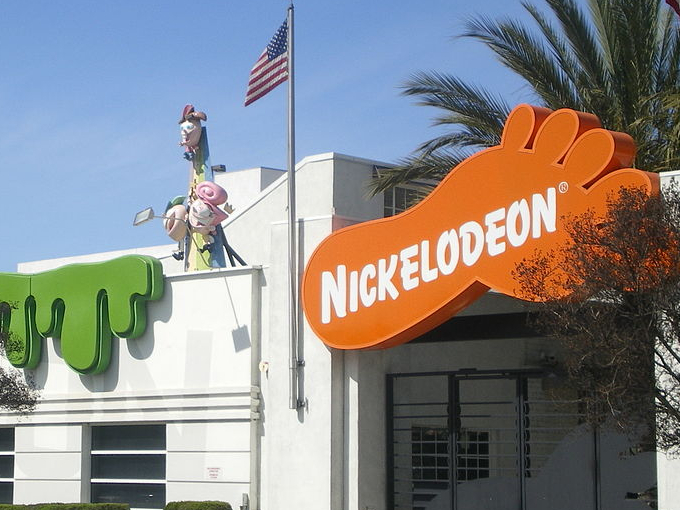
“The Disney Afternoon”
Disney’s afternoon programming block featured classics like “DuckTales,” “Chip ‘n Dale: Rescue Rangers,” and “TaleSpin.” These series combined adventure, humor and memorable characters.
Disney’s afternoon programming block was a treasure trove of animated classics that brought joy to viewers of all ages. At its heart were beloved shows like “DuckTales,” “Chip ‘n Dale: Rescue Rangers,” and “TaleSpin,” each of which contributed to the enduring magic of Disney animation. Let’s dive deeper into what made these series so unforgettable:
Timeless Adventure: “DuckTales,” “Chip ‘n Dale: Rescue Rangers,” and “TaleSpin” were all masterpieces of adventure storytelling. They whisked viewers away on thrilling journeys filled with daring escapades, treasure hunts and high-flying exploits. These shows ignited the imagination and offered a sense of excitement and wonder that captivated young and old alike.
Irresistible Humor: Amidst the action and adventure, humor was a constant companion. The witty banter, clever wordplay and endearing comedic moments in these series kept audiences laughing and coming back for more. The humor was sophisticated enough to entertain adults while remaining accessible and enjoyable for children.
Memorable Characters: The characters in these shows were nothing short of iconic. From Scrooge McDuck and Launchpad McQuack in “DuckTales” to Chip, Dale and the rest of the Rescue Rangers, as well as Baloo and Kit Cloudkicker in “TaleSpin,” these characters became beloved figures in the world of animation. They were relatable, quirky and showcased a wide range of personalities.
Strong Moral Lessons: Disney’s afternoon programming was not just about entertainment; it also imparted important moral lessons. These shows often explored themes of teamwork, friendship, loyalty and the value of doing what is right. Viewers learned valuable life lessons while being thoroughly entertained.
Expansive Worlds: Each series created expansive and immersive worlds that sparked the imagination. Whether it was the globe-trotting adventures of “DuckTales,” the urban mysteries of “Rescue Rangers,” or the high-flying escapades of “TaleSpin,” these shows transported viewers to richly detailed and captivating settings.
Catchy Theme Songs: The theme songs of these shows are etched in the memories of viewers. They were not just catchy tunes; they were anthems that signaled the beginning of exciting adventures. Even today, hearing these theme songs can evoke a wave of nostalgia and transport fans back to their childhoods.
Cross-Generational Appeal: Disney’s afternoon programming had a remarkable ability to appeal to audiences of all generations. Parents could enjoy these shows with their children, creating shared viewing experiences and bonding over the adventures of Scrooge, Chip, Dale and Baloo.
Cultural Impact: These shows had a significant cultural impact, inspiring merchandise, video games and even comic books. The characters and stories continued to thrive beyond the screen, becoming enduring symbols of Disney’s storytelling prowess.
Legacy: The legacy of “DuckTales,” “Chip ‘n Dale: Rescue Rangers,” and “TaleSpin” lives on. “DuckTales” received a successful reboot, introducing a new generation to the adventures of the McDuck family. The enduring popularity of these series showcases their timeless appeal.
In conclusion, Disney’s afternoon programming block, featuring these classic animated series, was a treasure trove of adventure, humor and heart. The enduring magic of “DuckTales,” “Chip ‘n Dale: Rescue Rangers,” and “TaleSpin” lies in their ability to transport viewers to imaginative worlds while delivering timeless lessons and unforgettable characters. They remain a cherished part of Disney’s animated legacy, continuing to warm the hearts of fans and ensuring that the spirit of adventure and laughter lives on for generations to come.
Looking for more insights? You’ll find them right here in our extended coverage: Were you more of a Disney, Nickelodeon, or Cartoon Network kid …

“Boy Meets World”
Disney’s foray into live-action sitcoms with “Boy Meets World” struck a chord with older kids and teenagers, offering relatable coming-of-age stories and life lessons.
Disney’s entry into the realm of live-action sitcoms with “Boy Meets World” was a pivotal moment in the network’s history. Here’s how this show not only struck a chord with older kids and teenagers but also left an indelible mark on the landscape of television:
Relatable Coming-of-Age: “Boy Meets World” had a unique ability to capture the essence of the coming-of-age journey. Through the eyes of its protagonist, Cory Matthews and his friends, it navigated the challenges and triumphs of adolescence. Viewers saw their own experiences mirrored on screen, from navigating school and friendships to discovering first love.
Timeless Life Lessons: The show was a treasure trove of life lessons. From the sage wisdom of Mr. Feeny to the humorous yet heartfelt exchanges among friends, “Boy Meets World” seamlessly wove important values and principles into its narrative. It taught viewers about integrity, friendship, the value of education and the power of perseverance.
Character Growth: One of the show’s enduring strengths was its commitment to character growth. Over the course of seven seasons, viewers witnessed the characters evolve and mature. Cory, Topanga, Shawn and others faced challenges that allowed them to grow individually and within their relationships, mirroring the real-life growth of its audience.
Balancing Humor and Heart: “Boy Meets World” struck a perfect balance between humor and heart. While it delivered laughs and comedic situations, it never shied away from addressing serious issues like family dynamics, societal pressures and personal identity. This blend of levity and depth resonated with viewers of all ages.
Multigenerational Appeal: The show’s ability to appeal to both teenagers and adults contributed to its widespread popularity. Parents who grew up with the show could enjoy it with their own children, creating a shared viewing experience that fostered meaningful discussions about the themes presented.
Strong Cast Chemistry: The chemistry among the cast members was palpable, creating a sense of authenticity in their interactions. Cory and Shawn’s friendship, Cory and Topanga’s love story and Mr. Feeny’s mentorship all felt genuine, making viewers feel like they were part of the Matthews family.
Legacy of Impact: “Boy Meets World” left an enduring legacy. It continues to be celebrated by fans old and new and its lessons are passed down from one generation to the next. Its characters and stories remain relevant, reminding us that the journey of self-discovery and growth is a timeless one.
Inspiration for Future Creators: The success of “Boy Meets World” has inspired future creators to tackle similar themes in their work. It set a high bar for coming-of-age storytelling, encouraging others to explore the complexities of youth with honesty and depth.
In summary, “Boy Meets World” was more than just a television show; it was a guide for generations navigating the tumultuous path to adulthood. Its relatable characters, timeless lessons and enduring legacy continue to warm the hearts of viewers, reinforcing the idea that sometimes, the most profound lessons in life can be found in the stories we watch on screen.”
If you’d like to dive deeper into this subject, there’s more to discover on this page: Battling with the ’90s and Early 2000’s Television Lineup

The Cultural Impact and Legacy
The battle between Nickelodeon and Disney not only entertained but also left a significant cultural impact.
The legendary battle between Nickelodeon and Disney in the world of children’s entertainment was not just about lighthearted rivalry; it was a cultural phenomenon that left an indelible mark on generations of viewers. This epic clash of the titans not only provided endless hours of entertainment but also shaped the way we perceive and engage with media and popular culture.
Through their captivating shows, both Nickelodeon and Disney managed to capture the hearts and imaginations of kids and adults alike. The creative powerhouses behind these networks unleashed a tidal wave of animated and live-action series that not only entertained but also introduced us to memorable characters, catchphrases and life lessons that continue to resonate.
Beyond the laughs and adventures, the battle was instrumental in defining the essence of children’s programming. Nickelodeon championed the irreverent, often unpredictable and humorously subversive side of storytelling, while Disney excelled in crafting timeless tales of magic, friendship and coming-of-age journeys. This dichotomy reflected the diverse tastes and interests of young viewers, giving them a broader spectrum of entertainment options to choose from.
Moreover, the competition fostered an environment of continuous improvement and innovation. Both networks pushed each other to create more engaging content, experiment with new formats and introduce cutting-edge animation techniques. This creative arms race led to some of the most iconic shows and moments in the history of children’s television.
The cultural impact of this rivalry extended far beyond the TV screen. It ignited a sense of camaraderie among fans, sparking debates and discussions about which network reigned supreme. The battle between Nickelodeon and Disney became a shared cultural touchstone and it often transcended generational gaps, with parents sharing their favorite shows and characters with their children, creating a sense of nostalgia and continuity.
In the end, the Nickelodeon vs. Disney battle was more than just a competition; it was a cultural phenomenon that shaped the way we view and cherish the world of children’s entertainment. It fostered creativity, sparked imaginations and brought joy to countless households, leaving an enduring legacy that continues to warm hearts and inspire new generations of viewers.
Don’t stop here; you can continue your exploration by following this link for more details: The Best Disney and Nickelodeon Pop Stars, Ranked

Iconic Characters
Characters like SpongeBob SquarePants, Tommy Pickles and Kim Possible became cultural icons, while shows like “The Ren & Stimpy Show” pushed boundaries in animation.
The impact of animated characters like SpongeBob SquarePants, Tommy Pickles and Kim Possible extends far beyond their respective shows. They are not just characters; they are cultural icons that have left an indelible mark on generations of viewers.
1. SpongeBob SquarePants: SpongeBob’s infectious enthusiasm, unwavering optimism and memorable catchphrases have made him a beloved figure around the world. His character embodies the idea of finding joy in life’s simplest pleasures and approaching challenges with a smile. SpongeBob’s influence can be seen in the countless memes, merchandise and even theme park attractions dedicated to his world.
2. Tommy Pickles: As the fearless leader of the Rugrats, Tommy Pickles was not only a source of entertainment but also a role model for young viewers. His curiosity, creativity and ability to navigate the challenges of toddlerhood resonated with children and parents alike. Tommy’s adventures with his fellow Rugrats continue to be a cherished part of many childhoods.
3. Kim Possible: Kim Possible broke the mold for animated heroines. She was strong, intelligent and capable, showing young viewers that girls could be action heroes too. Kim’s iconic catchphrase, “So not the drama,” embodied her confidence and resilience in the face of adversity. Her character remains an inspiration to those who grew up watching her.
Additionally, shows like “The Ren & Stimpy Show” played a pivotal role in pushing the boundaries of animation. Ren and Stimpy’s offbeat humor and irreverent style challenged traditional norms and paved the way for a new era of animated programming. While the show was controversial, it undeniably influenced the direction of animation and encouraged creators to explore unconventional storytelling.
These characters and shows didn’t just entertain; they contributed to the cultural fabric of their time. They sparked conversations, inspired creativity and introduced innovative approaches to animation. Even today, they continue to influence pop culture and inspire new generations of animators, writers and artists.
In essence, characters like SpongeBob, Tommy Pickles and Kim Possible, along with shows like “The Ren & Stimpy Show,” are more than just cartoons; they are timeless symbols of creativity, innovation and the enduring power of animated storytelling. Their legacies continue to resonate, reminding us of the impact that animated characters and their worlds can have on our lives and the cultural landscape as a whole.
If you’d like to dive deeper into this subject, there’s more to discover on this page: Iconic TV Crossovers On Disney Channel And Nickelodeon

Soundtracks and Merchandise
Both networks produced memorable soundtracks and merchandise that allowed fans to immerse themselves in the worlds of their favorite shows.
Certainly! Here’s an extended idea:
“Both networks, through their groundbreaking series, did more than just capture the hearts of viewers; they created entire universes that fans could inhabit beyond the screen. Part of the magic lay in their ability to craft memorable soundtracks and merchandise that became essential components of the fan experience.
The power of a great soundtrack cannot be underestimated. For viewers of these iconic shows, the music became a character in itself, weaving emotions, tension and nostalgia throughout the narrative. Whether it was the haunting melodies of ‘The X-Files’ that sent shivers down our spines or the eclectic mixtapes curated by Buffy Summers in ‘Buffy the Vampire Slayer,’ the music enhanced the storytelling, creating a deeper connection between the audience and the on-screen adventures.
These soundtracks, often featuring songs from popular artists of the time, allowed fans to carry a piece of their favorite shows with them wherever they went. The songs became anthems of nostalgia, instantly transporting viewers back to the memorable moments and emotional highs and lows of their beloved characters. To this day, hearing a song from one of these soundtracks can evoke a rush of feelings and memories associated with the shows.
Moreover, both networks recognized the importance of merchandise in fostering fan engagement. They unleashed a wave of collectibles, clothing and memorabilia that allowed fans to express their loyalty and passion for the shows. From action figures of Mulder and Scully to ‘Buffy the Vampire Slayer’ t-shirts, fans could proudly display their fandom and feel like an active part of the show’s extended community.
These merchandise offerings weren’t limited to physical products; they also extended into the realm of books, comics and video games. ‘The X-Files’ and ‘Buffy the Vampire Slayer’ found new life in these formats, expanding the stories and offering fans fresh ways to engage with the characters and narratives they cherished.
In essence, both networks understood the importance of going beyond the screen to create immersive fan experiences. The soundtracks and merchandise not only added depth to the shows but also provided fans with tangible connections to the fictional worlds they loved. They allowed fans to share in the adventures, mysteries and emotions of their favorite characters and in doing so, forged lasting bonds between viewers and the shows that still endure today.”
Don’t stop here; you can continue your exploration by following this link for more details: Battle of the childhood stations: Is Disney, Nickelodeon or Cartoon …

Nostalgia and Reboots
The nostalgia for 90’s kids’ programming led to reboots and revivals of beloved series, proving that the influence of Nickelodeon and Disney continues to resonate with new generations.
The enduring allure of 90’s kids’ programming has woven itself into the fabric of pop culture, leaving an indelible mark on the hearts and minds of both the generation that grew up with these shows and the newer ones that followed. This nostalgia isn’t just a sentimental longing for the past; it’s a testament to the timeless quality of the content produced by networks like Nickelodeon and Disney.
In recent years, we’ve witnessed a remarkable trend—the resurgence of these beloved series in the form of reboots and revivals. Shows that once captured the imaginations of 90’s kids have found new life, captivating a fresh audience and reigniting the passion of loyal fans.
These reboots and revivals pay homage to the original series while infusing them with a contemporary twist. They introduce beloved characters to a new generation of viewers who get to experience the same joy, humor and life lessons that enchanted their parents or older siblings.
Moreover, these reboots often feature the return of familiar faces—both in front of and behind the camera. Original cast members, now grown up, bring a unique authenticity to the reimagined stories. This continuity of character arcs and the development of fan-favorite relationships add depth and resonance to the new iterations.
The success of these reboots underscores the enduring influence of shows like “Rugrats,” “DuckTales,” and “Are You Afraid of the Dark?” These series originally aired in a pre-digital age, yet their universal themes, memorable characters and timeless humor still strike a chord with modern audiences.
What’s particularly heartening is that these reboots not only cater to the nostalgia of older viewers but also offer something fresh and exciting for the younger generation. They bridge the gap between past and present, connecting families through shared viewing experiences and sparking conversations about the cultural touchstones of different eras.
In essence, the continued popularity of 90’s kids’ programming, as evidenced by these reboots and revivals, serves as a testament to the enduring power of quality storytelling. It’s a reminder that the themes of friendship, adventure and self-discovery are universal and timeless, transcending the boundaries of time and technology.
As we witness these beloved shows being reintroduced to the world, it’s a heartwarming reminder that the magic of Nickelodeon and Disney from the 90s remains alive and well, ready to captivate the hearts of both young and old. It’s a testament to the enduring legacy of these shows and the lasting impact they’ve had on generations of viewers.
Explore this link for a more extensive examination of the topic: Are You a ’90s Disney or Nick Kid? Test Your Knowledge (QUIZ)
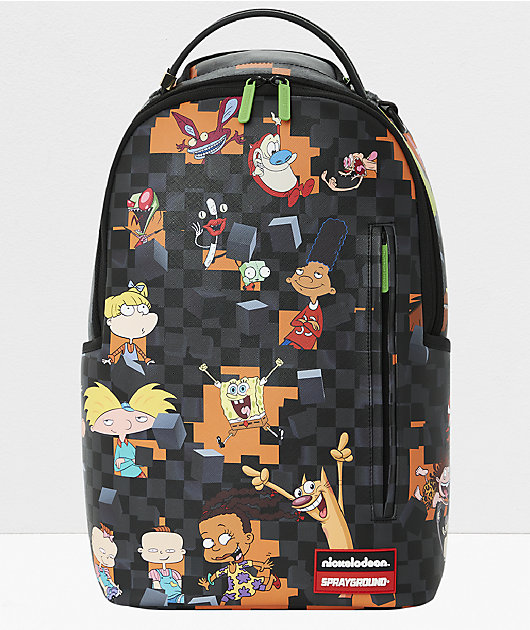
The battle between Nickelodeon and Disney in the 1990s was more than just a competition for ratings; it was a battle for the hearts and minds of a generation. These networks not only provided entertainment but also shaped the cultural landscape of the era. Today, the legacy of Nickelodeon and Disney lives on in the hearts of those who grew up with their shows, a testament to the enduring power of children’s programming that continues to captivate and inspire new audiences.
“The rivalry between Nickelodeon and Disney during the 1990s was an epic clash, transcending mere ratings wars—it was a struggle for the affection and imagination of an entire generation. These networks went beyond entertainment, molding the very fabric of 90s culture. Presently, the indelible imprint of Nickelodeon and Disney remains etched in the hearts of those who were raised on their shows, showcasing the enduring influence of children’s programming. It’s a testament to the timelessness of their storytelling, a legacy that not only captivated yesteryears but continues to inspire and enchant new audiences, carrying the magic into the future.”
For a comprehensive look at this subject, we invite you to read more on this dedicated page: Best Family and Kids Halloween Shows and Movies on Netflix for …
More links
Explore this link for a more extensive examination of the topic: Battle of the childhood stations: Is Disney, Nickelodeon or Cartoon …
